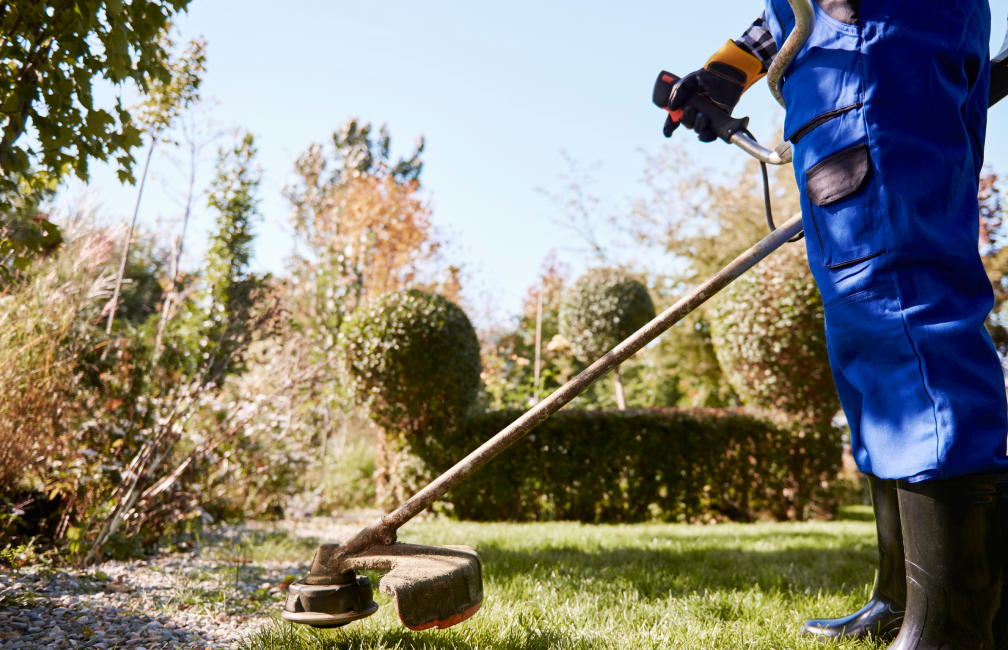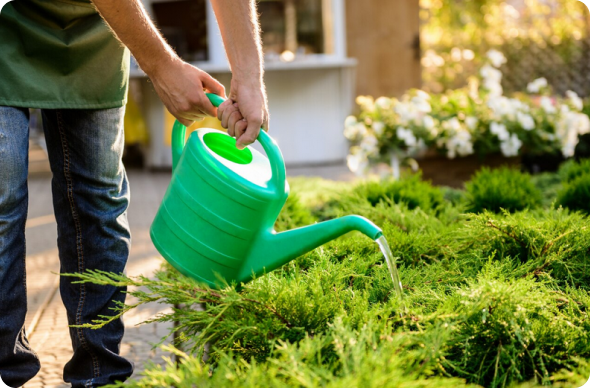
Carver Green Waste Disposal Services
Choose our Green Waste Disposal for reliable, environmentally responsible service that keeps your property clean and helps protect our planet—experience hassle-free pickups, expert handling, and a commitment to sustainability.
Get a Free QuoteWhen to Schedule Green Waste Disposal in Carver, MA – Seasonal Guide
In Carver, MA, the best times to schedule green waste disposal are closely tied to our unique climate and landscape. Spring and late fall are optimal, as these periods align with peak yard maintenance and cleanup needs. Carver’s climate features cold winters with frost typically ending in late April, and humid summers that can encourage rapid plant growth. Neighborhoods near Sampson’s Pond or the Myles Standish State Forest often experience heavier leaf and branch accumulation due to dense tree coverage and varied terrain.
Local environmental factors such as sandy soils, common in areas like North Carver, and the risk of summer droughts can influence when and how often you should clear green waste. Shade from mature oaks and pines, especially in established neighborhoods, can delay drying after rain, making timely disposal important to prevent mold and pests. For more information on local guidelines and municipal schedules, visit the Town of Carver’s official website.
Local Factors to Consider for Green Waste Disposal in Carver
- Tree density and types (oaks, pines, maples)
- Proximity to water bodies (e.g., Sampson’s Pond)
- Soil type (sandy vs. loamy)
- Seasonal precipitation and humidity
- Frost dates and risk of late spring freezes
- Municipal restrictions and pickup schedules
- Terrain and accessibility of your property
Benefits of Green Waste Disposal in Carver

Eco-Friendly Landscaping Solutions
Efficient Green Waste Removal
Promotes Healthy Lawns and Gardens
Reduces Landfill Waste
Supports Local Sustainability
Convenient Scheduling Options

Carver Green Waste Disposal Types
Grass Clippings
Tree Branches
Shrub Trimmings
Leaves
Garden Debris
Wood Chips
Weeds
Our Green Waste Disposal Process
Collection of Green Waste
Sorting and Separation
Transport to Disposal Facility
Eco-Friendly Processing
Why Choose Carver Landscape Services

Carver Homeowners Trust Us
Expert Lawn Maintenance
Reliable Seasonal Cleanups
Competitive Pricing
Professional Team
Satisfaction Guarantee
Personalized Service
Contact Carver's Department of Public Works for Seasonal Green Waste Collection & Municipal Composting Programs
Carver’s Department of Public Works operates a robust organics management system from April through December, with service tailored to the town’s rural landscape, extensive cranberry bogs, and environmental priorities. Curbside pickup is organized by local villages—such as North Carver, South Carver, East Carver, Center Carver, and West Carver—to address local traffic patterns, road widths, and seasonal needs. Place yard waste at the curb by 7:00 AM on your collection day, at least 3 feet from mailboxes and 10 feet from storm drains, using paper bags or clearly labeled barrels (plastic bags are not permitted).
Carver Department of Public Works
108 Main Street, Carver, MA 02330
Phone: (508) 866-3400
Official Website: Carver Department of Public Works
Key features of Carver’s green waste program:
- Weekly or bi-weekly curbside pickup in spring and fall, with extended autumn service for heavy leaf and pine needle drop.
- Brush and branch collection: materials must be cut to 4-foot lengths, bundled with natural twine, and not exceed 50 pounds per bundle.
- Special holiday tree collection in January (remove all decorations, tinsel, and stands).
- Resident drop-off at the Transfer Station with current permit/sticker; offers seasonal hours, proof of residency checks, and volume limits.
- Storm debris and emergency cleanup coordinated after weather events, often in cooperation with local agriculture and emergency management.
Carver’s composting site processes organics into soil amendments, available to residents on select days. Programs also include wood chipping, community garden compost support, and educational workshops promoting responsible yard management suited to sandy soils and wetland areas.
Understanding Green Waste Volume & Decomposition Dynamics in Carver's Cape Cod Sandy Outwash & Cranberry Bog Soils
Carver’s unique setting atop Cape Cod outwash sands and cranberry bogs shapes every aspect of organic waste management. The area is dominated by excessively drained Carver and Plymouth soils, with patches of Hinckley and Windsor sand, and peat-rich Freetown mucks around wetlands and cranberry reservoirs.
How these conditions impact management:
- Sandy soils dry quickly, which can speed up decomposition but also cause paper bags to tear if left out too long or overfilled.
- Areas around bogs and wetlands can become waterlogged—thick piles of leaves or needles here may mat down, become anaerobic, and decompose slowly.
- Pine needles from extensive pitch pine forests acidify surface soils, slowing down microbial activity and requiring more “brown” material in compost.
- Oak leaves persist into late fall, making autumn a high-volume collection period.
- Freeze-thaw cycles and seasonal winds compress leaf and needle piles, further complicating breakdown.
The local canopy includes pitch pine, white pine, scrub oak, red maple, and both white and red oaks, with cranberry agriculture adding its own organic byproducts. For a closer look at these soils, visit the USDA Web Soil Survey.
Carver's Implementation of Massachusetts Organic Waste Diversion Requirements for Residents
Massachusetts General Law Chapter 111, Section 150A strictly prohibits disposal of yard waste in household trash or at municipal solid waste facilities. Carver enforces this law through its curbside program, Transfer Station operations, and ongoing resident education.
Massachusetts Department of Environmental Protection
One Winter Street, Boston, MA 02108
Phone: (617) 292-5500
Official Website: Massachusetts Department of Environmental Protection
Key compliance details:
- Curbside trash containing yard waste or plastic bags will not be collected; repeat offenses trigger enforcement.
- Commercial operations—including landscapers and cranberry growers—must haul green waste to approved facilities and keep disposal records.
- The town partners with MassDEP for permitting, diversion tracking, and technical support.
- Community outreach includes mailers, web resources, and periodic workshops.
Proper Preparation & Sorting of Green Waste Materials for Carver's Collection Programs
To keep collection efficient and compost streams clean, follow these preparation guidelines:
Accepted materials:
- Grass clippings (fresh or dry), leaves (all species), pine needles
- Garden cleanouts: spent vegetables, flowers, soft prunings
- Brush/branches up to 4 feet in length, bundled with natural twine, max 50 lbs
- Seasonal items: pumpkins, gourds, Christmas trees (decorations removed)
Materials not accepted:
- Treated or painted wood, construction debris
- Soil, rocks, sod, plastic pots, metal wire, landscape fabric
- Diseased plant materials (require special handling)
- Invasive plants needing containment (Japanese knotweed, bittersweet, glossy buckthorn)
Massachusetts Department of Agricultural Resources
251 Causeway Street, Suite 500, Boston, MA 02114
Phone: (617) 626-1700
Official Website: Massachusetts Department of Agricultural Resources
Preparation tips:
- Use only biodegradable paper bags or barrels labeled “Yard Waste.”
- Position piles and bundles at least 10 feet from storm drains/catch basins.
- After storms, separate pure organic debris from mixed construction materials for municipal pickup.
Carver Conservation Commission Guidelines for Green Waste Management Near Protected Areas
Carver’s Conservation Commission enforces the Massachusetts Wetlands Protection Act, safeguarding the town’s ponds, bogs, and rare wetland habitats. Dumping leaves, brush, or garden waste near or into wetlands, bog dikes, or woodlands is strictly prohibited, as it can suffocate native vegetation and pollute water.
Carver Conservation Commission
108 Main Street, Carver, MA 02330
Phone: (508) 866-3400
Official Website: Carver Conservation Commission
Guidelines for sensitive areas:
- Respect 100-foot wetland and 200-foot riverfront buffers; consult the Commission before large-scale cleanups near these zones.
- Retain natural leaf cover in conservation areas for erosion control and wildlife habitat.
- Bag and properly dispose of invasive species to prevent further spread.
- Time major yard work to avoid disturbing wildlife during nesting or migration.
Protected areas include Sampson Pond, Savery Pond, Vaughn Pond, and the extensive network of cranberry bogs and streams.
Protecting Carver's Water Quality Through Green Waste Management & MS4 Stormwater Compliance
Effective green waste management is a pillar of Carver’s water quality protection strategy and MS4 permit compliance under the Clean Water Act. Organic matter entering storm drains elevates nutrients in ponds and bogs, fueling algae and reducing oxygen levels.
U.S. Environmental Protection Agency, Region 1
5 Post Office Square, Suite 100, Boston, MA 02109
Phone: (617) 918-1111
Official Website: U.S. Environmental Protection Agency, Region 1
What residents can do:
- Keep yard waste off roads and out of drainage ditches; maintain a 10–15 foot buffer from inlets.
- Sweep, don’t hose, leaves from driveways and walkways.
- Cover paper bags if rain is expected to prevent nutrient runoff.
- Report clogged catch basins or storm drains to the DPW.
- Separate storm debris (organic vs. construction) for pickup after severe weather.
Proper practices protect Sampson, Savery, and Vaughn Ponds, cranberry bogs, and downstream wetlands—while reducing landfill methane and supporting soil health through compost.
On-Site Green Waste Management: Composting, Mulching & Sustainable Practices in Carver
Carver’s sandy soils offer excellent drainage for home composting—provided moisture and carbon balance are carefully managed.
University of Massachusetts Extension Center for Agriculture, Food and the Environment
161 Holdsworth Way, Amherst, MA 01003
Phone: (413) 545-4800
Official Website: University of Massachusetts Extension
Home composting guidelines:
- Site bins 10–20 feet from property lines and at least 100 feet from drinking water wells.
- Standard bin size: 3x3x3 or 4x4x4 feet; rodent-resistant covers help deter pests.
- Mix approximately 3 parts “browns” (leaves, chips) to 1 part “greens” (grass, veggie scraps).
- Maintain moisture like a wrung sponge—add water during droughts, dry material/aeration during wet spells.
- For rapid, sanitized compost, maintain pile temperatures at 131–160°F.
Do not compost: meat, dairy, oils, pet waste, diseased plants, or invasive species.
Alternatives: mulch-mow leaves into turf, chip brush for pathways, leave some organic material in naturalized beds, and grasscycle for nutrient recycling.
What Neighborhoods Do We Serve Throughout Carver, MA?
- South Carver/Sampson Pond: Large wooded lots, heavy pine/oak needle drop, lakefront zones requiring strict buffer compliance, and narrow lanes needing precise curb placement.
- North Carver/Route 44 Corridor: Mix of homes and commercial sites, with high brush volumes along open edges. Multifamily complexes share responsibilities; good truck access.
- Carver Center/Town Hall Area: Older shade trees, smaller yards, frequent cleanups in spring and fall, and proximity to civic centers—avoid staging waste near drains and sidewalks.
- East Carver/Plympton Line: Rural parcels with bogs and wetlands, slow leaf breakdown in saturated soils—drop-off is often better to prevent matted piles near buffers.
- West Carver (Middleborough Border): Wooded, storm-prone lots with wide frontages, making on-site chipping and composting practical.
- South Meadow Village/Senior Communities: Smaller properties, coordinated pickups, assistance available during peak seasons, and low-slope sites needing careful staging to avoid runoff.
- Myles Standish Fringe: Pine barrens with high fire risk—prompt brush removal and maintaining mulch-free zones around structures are priorities.
Carver Municipal Bylaws for Green Waste Equipment Operation & Commercial Services
Carver’s bylaws ensure green waste equipment is used safely and respectfully:
- Standard operation: 7:00 AM–6:00 PM weekdays, 8:00 AM–5:00 PM Saturdays; observe quiet hours and noise limits.
- All equipment must meet local noise ordinances—use mufflers or chippers as required.
- Commercial haulers and landscapers must be licensed, document organics diversion, and use permitted facilities.
- Residents and contractors must separate storm debris from construction/demolition materials for emergency pickups.
- Non-compliance may lead to warnings, non-collection, or fines—education is prioritized.
Carver Building Department
108 Main Street, Carver, MA 02330
Phone: (508) 866-3400
Official Website: Carver Building Department
Carver Board of Health
108 Main Street, Carver, MA 02330
Phone: (508) 866-3400
Official Website: Carver Board of Health
For questions about equipment rules, composting permits, or neighborhood collection, reach out to the DPW, Building Department, or Board of Health. By following these guidelines, Carver residents help preserve the health of local ecosystems, support sustainable land use, and maintain compliance with Massachusetts law.